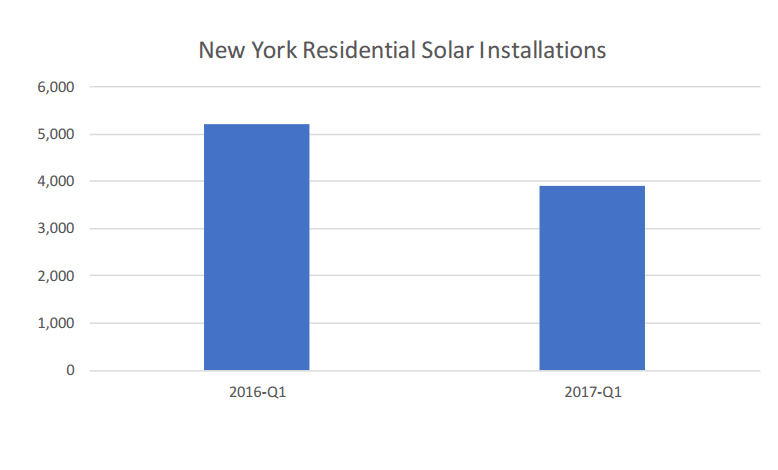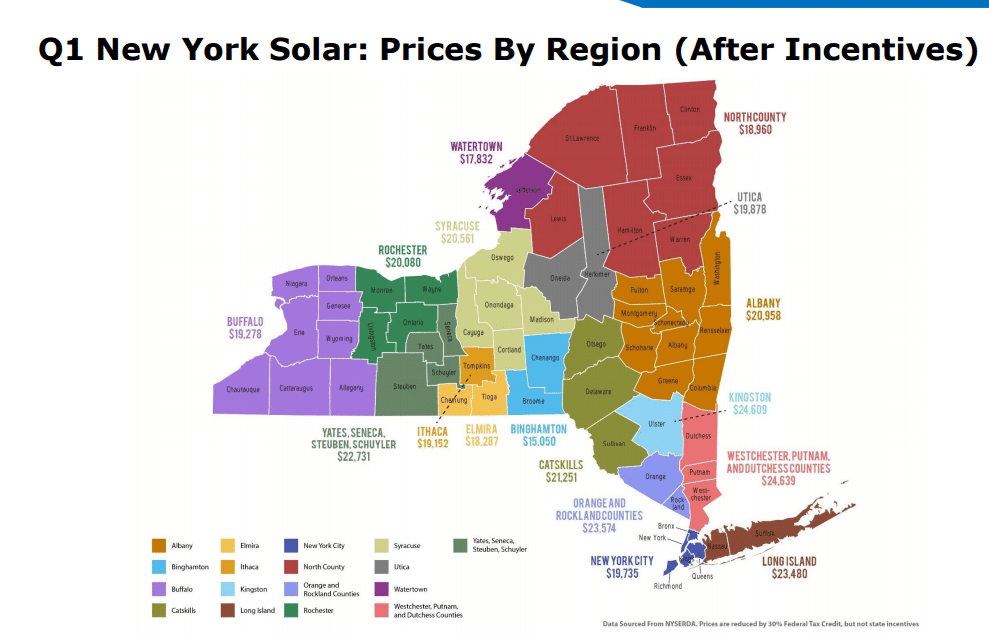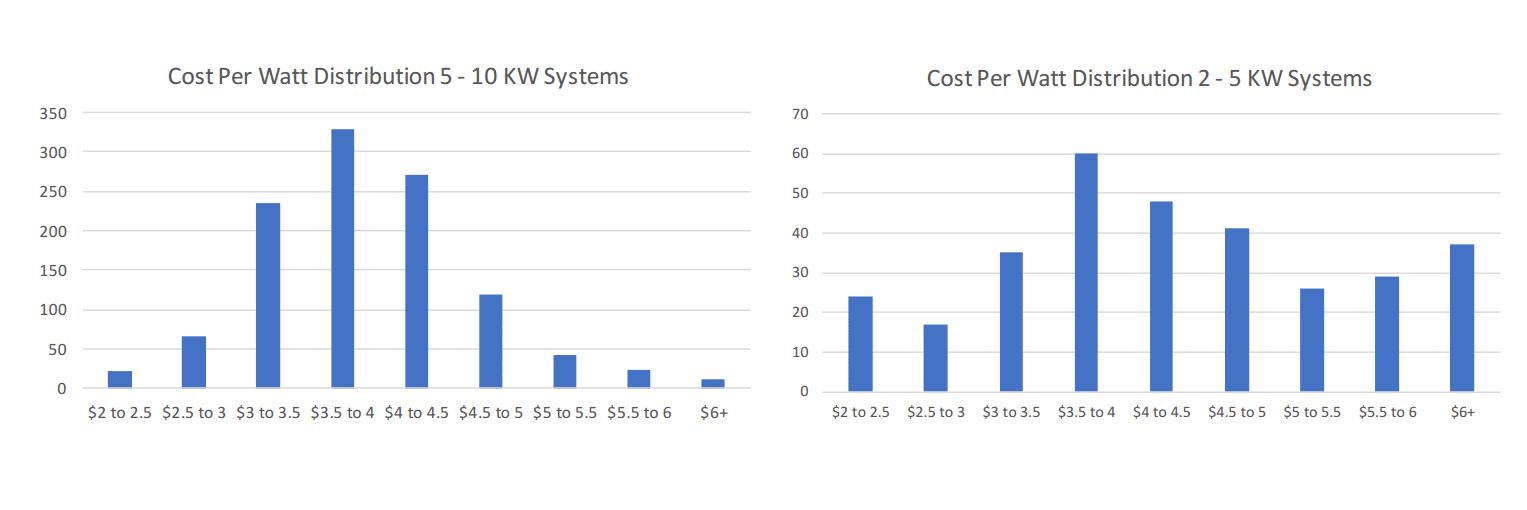Citing disappearing incentives in some regions of the state, high penetrations of early adopters and pullbacks by national solar installers, a new study says residential installations in New York fell 25% in the first quarter from the same period last year.
According to OhmHome, a consumer-facing website designed to provide information to homeowners thinking of going solar, prices per watt also rose over the fourth quarter of 2016 to $4.11/watt. Before incentives, residential systems in New York cost of an average of $31,830.

That’s sobering news for a state that just broke into the Solar Energy Industries Association’s (SEIA) Top 10 Solar States. Until recently, the solar news out of New York had almost been universally positive. Reports in February from the governor’s office said the industry had grown nearly 800% over the past five years. New York City just passed 100 MW of installed solar. And the state just invested $11 million in community solar.
New York City was the one bright spot amid an otherwise dismal report. OhmHome reports New York City’s residential market expanded 226%. Long Island, on the other hand, displayed one of the steepest declines at 65%.

For the overall state, solar penetration reached nearly 2% by the end of last year, meaning that 18 out of every 1,000 homes in thee state had solar panels on them. Richmond County, which encompasses Staten Island, had the highest penetration rates.
In 2016, more New Yorkers decided owning their own system made more sense than having a third party involved. From a high of 62% in 2015, only 56% of systems were owned by third parties last year. OhmHome says that the national shift towards ownership is driven by three factors:
- a slowdown by large national installers;
- expansion of attractive loan alternatives for consumers; and
- growing solar markets in states (Florida and Utah) that do not allow third-party ownership.

This content is protected by copyright and may not be reused. If you want to cooperate with us and would like to reuse some of our content, please contact: editors@pv-magazine.com.








By submitting this form you agree to pv magazine using your data for the purposes of publishing your comment.
Your personal data will only be disclosed or otherwise transmitted to third parties for the purposes of spam filtering or if this is necessary for technical maintenance of the website. Any other transfer to third parties will not take place unless this is justified on the basis of applicable data protection regulations or if pv magazine is legally obliged to do so.
You may revoke this consent at any time with effect for the future, in which case your personal data will be deleted immediately. Otherwise, your data will be deleted if pv magazine has processed your request or the purpose of data storage is fulfilled.
Further information on data privacy can be found in our Data Protection Policy.